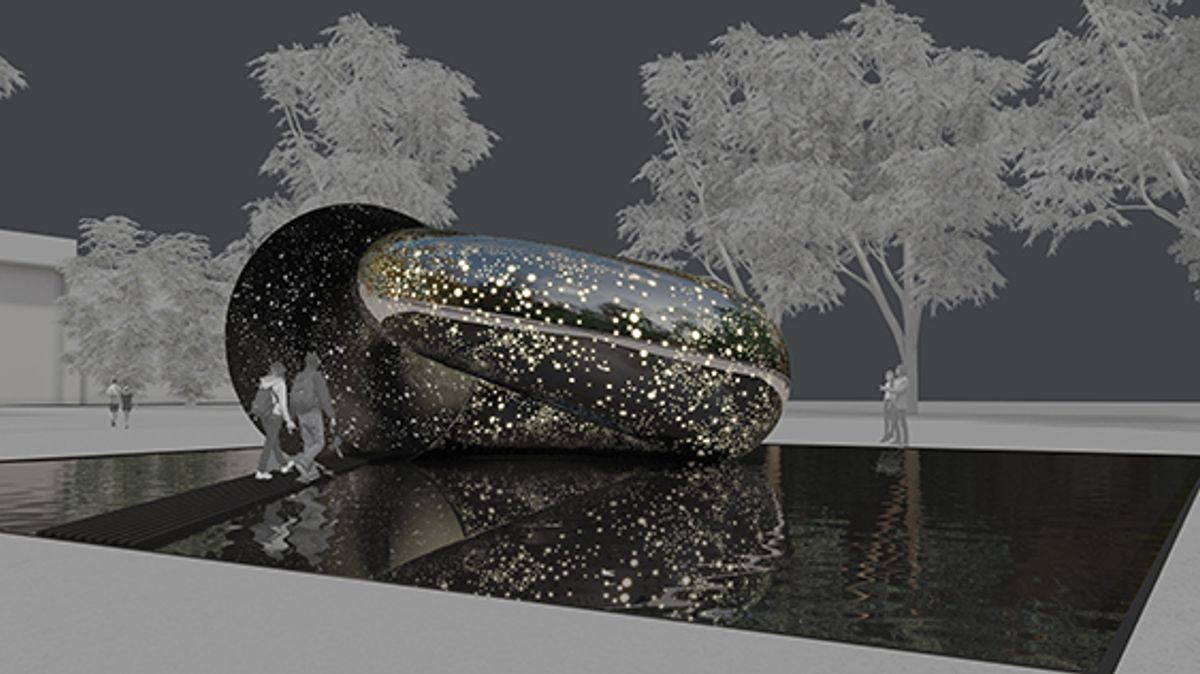The National Gallery of Australia has commissioned its most expensive ever work. A A$14m outdoor sculpture by the prominent contemporary artist Lindy Lee will stand as a 13-tonne monument to the Canberra institution’s ongoing push to recognise the work of Australian women artists through Know My Name, the campaign of exhibitions and events that the gallery launched in 2019.
Lee’s work, called Ouroboros, will sit in the National Gallery’s sculpture garden. It will reference the ouroboros, the ancient symbol depicting a snake or dragon devouring its own tail. Lee is an Australian of Chinese heritage and a student of Zen Buddhism, which is one of many spiritual realms in which the ouroboros appears as a symbol of life, death and never-ending renewal. (It also appears in other cultures, such as Aztec and Norse.)
“It is a dance between something that is solid and something that is just drifting off into stardust”Lindy Lee, artist
The 4m-high Ouroboros, made from mirror-polished stainless steel and engineered so as to require no internal struts, will sit within a shallow pool of water. Visitors will be able to walk right inside the hollow construction to observe shafts of light filtering through hundreds of thousands of tiny perforations. At night, Ouroboros will be illuminated from within. The work, which has been paid for out of the gallery’s Collection Development Fund, will be accessible to the public 24 hours a day.
The National Gallery's director Nick Mitzevich says that Ouroboros will be one of Australia’s first environmentally sustainable works of public art, incorporating recycled materials, maximising renewable energy and with minimal carbon impact.
Lee, born in 1954 and living in northern New South Wales, says that Ouroboros will pulse with light and energy.
“During the day, its highly polished mirror surface will reflect the imagery of the floating world—the transience of passers-by, cars, birds in flight, and stunning clouds,” she says. “At night, the Ouroboros will be lit internally, returning its light to the world. It is a dance between something that is solid and something that is just drifting off into stardust.”
Lee’s first major retrospective—Lindy Lee: Moon in a Dew Drop, at the Museum of Contemporary Art Australia (MCA) in Sydney in 2020—was curated by the MCA's outgoing director, the Scots-born Elizabeth Ann Macgregor.
Lee’s National Gallery commission, which will be installed in early 2024, will celebrate the institution’s 40th anniversary in 2022 and will be the artist’s most significant work to date.
“We wanted to extend the practice of an artist,” Mitzevich says.
Another new work in the museum's collection this year is Ben Quilty’s Myall Creek Rorschach (2019), donated by the artist through the Australian Government's Cultural Gifts Program.
The painting depicts the site of the 1838 Myall Creek Massacre on Gamilaraay Country in northern New South Wales, where 12 colonists murdered 28 Wirrayaraay people.
The work acts as a memorial, Quilty says, adding:: “[Myall Creek] is the site of a war crime. You’d be doing yourself a disservice if you came to a place like this and didn’t think of the children, mothers and grandparents who lost their lives”.


